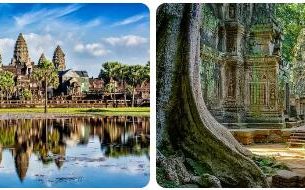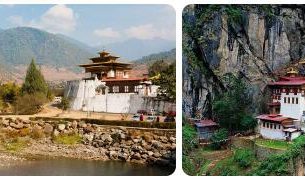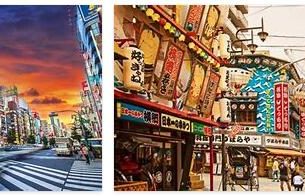Bangladesh – One of the poorest countries
The South Asian country of Bangladesh is the largest delta region in the world. More than 85% of the land consists of low alluvial plains. The south-western part of the country consists of the Sunderban’s mangrove forests, which are a UNESCO World Heritage Site and where, for example, the Bengal tiger finds its home.
The country is dominated by Muslims, around 83% of the population belongs to Islam, which is reflected in the Bengali culture and in everyday life. The predominantly Muslim East Bengal, i.e. today’s Bangladesh, became part of Pakistan as the “Province of East Pakistan” when the subcontinent became independent from Great Britain. Pakistan and the province of East Pakistan were separated from each other by approximately 2,000 km of Indian territory. On March 26, 1971, the country made independent of Pakistan.
Numerous western companies have textiles manufactured in the desperately poor country. The wages of the mostly female workers are miserable and the safety conditions are pathetic. On April 24, 2013, a six-story factory building collapsed, killing around 1,100 people.
| Name of the country | People’s Republic of Bangladesh |
| Form of government | Parliamentary democracy |
| Geographical location | South Asia |
| National anthem | Amar Sonar Bangla |
| Population | approx. 165 million (Credit: Countryaah: Bangladesh Population) |
| Ethnicities | The majority of the population are Bengali. They are descended from the Indo-Aryan immigrants. There are also around 250,000 Biharis and smaller peoples who mainly live in the Chittagong Hill Tracts. The four largest are the Chakma, Tipras, Mros and Mogh. |
| Religions |
|
| Languages | Bangla (Bengali) In addition, several tribal languages as minority languages |
| Capital | Dhaka with an estimated 15 million residents |
| Surface | 147,570 km² |
| Highest mountain | Mount Keokradong, with a height of 1,230 m |
| Longest river | Brahmaputra, with a length of 2,900 km |
| Largest lake in area | Karnafuli Reservoir |
| International license plate | BD |
| National currency | 1 taka = 100 poisha. |
| Difference to CET | + 5 h |
| International phone code | + 880 |
| Mains voltage, frequency | 220/240 volts and 50 hertz |
| Internet TLD (Top Level Domain) | .bd |
Bangladesh: history
Until around the year 1000
In the 3rd century BC BC Maurya emperors ruled the Indian subcontinent. These were replaced by Gupta emperors in the 4th century. The Islam ization of parts of South Asia began around 712. An economic heyday Bengal among the Buddhist Palakönigen 750-1197.
From the year 1000 to the 17th century
According to Abbreviationfinder website, Mohammed Bakhtiar brought Bengal under the rule of the Sultanate of Delhi in 1199. Muslims from Central Asia came to Bengal. Cities and infrastructure developed, culture flourished. Mughal emperors ruled the Indian subcontinent from the 16th to the 18th centuries. In 1608 Dhaka became the provincial capital of the Mughal Empire and Bengal opened up for international sea trade routes. In the 17th century trade relations developed between the Indian subcontinent and Portugal, France, the Netherlands and Great Britain.
In the 18th and 19th centuries
The British-East Indian trading company gained growing influence on the Indian subcontinent in the 18th century. In 1740 the Mughal rule in Bengal came to an end and power was taken over by the Nawab of Bengal. British supremacy on the Indian subcontinent was confirmed with the victory of Great Britain over France (Battle of Plessey) in 1757. In 1857 the first uprising of Indian regiments against British rule took place.
20th century until today
The first division of the Bengal province by the British took place between 1905 and 1912. This division was viewed by many South Asians as a religious division and thus contributed to the emergence of a separate Muslim independence movement in South Asia (All India Muslim League). In 1947, British colonial rule ended on the Indian subcontinent. The majority Muslim East Bengal became part of the whole of Pakistan when the subcontinent became the province of East Pakistan. Between West and East Pakistan there was about 2,000 km of Indian national territory.
Due to the political dominance of West Pakistan, tensions developed between the two parts of the country between 1947 and 1970.
A language movement in East Pakistan against the introduction of Urdu, which is foreign to Bengal, as the only language in Pakistan, became the nucleus of the independence movement. The East Pakistani Awami League won the most seats in the all- Pakistani parliament in the 1971 elections and provided the government for all of Pakistan.
However, this was rejected by the West Pakistani leadership. After a brief, bloody war of independence, Bangladesh gained independence on March 26, 1971 with Indian support. Under the charismatic leader of the Awami League, Sheikh Mujibur Rahman, Bangladesh began its path from 1971 to 1975 as a secular, parliamentary democracy with initially left-wing dirigist traits. On August 15, 1975, Sheikh Mujibur Rahman and his family were murdered.
Only two daughters who were in Germany at the time survived, including the future Prime Minister Sheikh Hasina. Army chief Ziaur Rahman, who in 1971 proclaimed the independence of Bangladesh on behalf of Sheikh Mujibur Rahman, prevailed in the following power struggles and led the country from 1975 until his assassination on May 30, 1981.
Army chief Hussain Mohammed Ershad took over the office of president from 1982 to 1990 and developed an increasingly authoritarian regime. In 1990, after ongoing mass demonstrations, he was overthrown by Sheikh Mujibur Rahman’s daughter, Sheikh Hasina, and Ziaur Rahman’s widow, Begum Khaleda Zia, who had formed an alliance.
After a parliamentary-democratic system was restored, the BNP, led by Begum Khaleda Zia, prevailed as the sole winner in the 1991 parliamentary elections. Begum Khaleda Zia became Prime Minister.
The Awami League under Sheikh Hasina won the parliamentary elections in 1996. Sheikh Hasina became Prime Minister. A four-party alliance led by the BNP won the 2001 parliamentary elections. Begum Khaleda Zia was again prime minister.
In addition to the secular BNP and the Jatiya Party, the Jamaat-e-Islami and the Islami Oikya Jote also include Islamic parties in the government for the first time.



